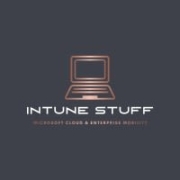What is our primary use case?
Around 90 percent of our platforms are in the cloud, and our company uses them to manage access to various platforms. In our company, what we used to do when we were on an on-premises setup was to use group policy to basically manage access and authorizations to various services, which can be quite challenging because not everything you want to do on GPO even though it is available in it. You can use or manage VBScript and PowerShell, but it was a bit challenging. With Microsoft Intune, you already have specific processes and platforms that have several things you can do with it in terms of security and in terms of making everything standardized, sort of a standard desktop, or even a customized one based on the user's job title, ranging from executive management to basic back-end staff. Microsoft Intune allows you to customize everything, like security, the availability of some features, and even updating particular systems or where and which system can access which service from a geographical location, which we couldn't do with GPO. Microsoft Intune allows us to be very flexible.
What is most valuable?
Applications have a feature that allows you to deploy applications remotely to different systems. They can be Windows-built, some business applications, small scripts, or even custom applications. The tool can even deploy fixes, and it has been one of the features we use quite frequently to troubleshoot and fix issues.
The tool brings all of our company's endpoint and security management tools into one place.
Speaking about the impact of Microsoft Intune on our company's IT and security operations, I would say that the tool has done a good job in terms of centralized management, but there is still a lot it can do. Microsoft Intune is just a mobile device management platform. It doesn't really implement security, specifically in terms of endpoint security for ransomware and other attacks, so our company has to supplement with other solutions.
If I assess Intune's user experience, I would say it is perfect and simple. In general, the tool is very easy to use. Every feature or domain, ranging from compliance to security to DLP, integrates very well with Microsoft's other modules.
I am using certain aspects of Microsoft Intune Suite, which involves the new collection of advanced endpoint management and security tools.
If I assess Microsoft Intune for securing hybrid work and protecting the company data and the data on my own devices, I would say that it works very well in handling BYOD cases. For all the corporate business apps, you can't share data outside Microsoft Intune or the enrolled devices. It has to go through all the approved suites of Microsoft Project and then into OneDrive so that we can tell where that information passed, making it basically a DLP type of thing. You can't copy and paste anything into an external product since it must be within Microsoft's suite. The tool really helped our company keep certain information confidential within Microsoft Office Suite, and it doesn't go outside, which is helpful.
I use Intune's Endpoint Privilege Management feature in Microsoft Intune. Speaking about how Intune's Endpoint Privilege Management enables our company to enforce the least privileged access that affects user productivity in our organization, I would say that all our users are at the basic level. Depending on the function users need to do, privileged access might be required, and we can basically elevate them to do it, and then we don't have to do anything beyond that.
In terms of how important it is in the context of our company's journey to the cloud that the capabilities of the Intune Suite are integrated with Microsoft 365 and Microsoft Security for both cloud and co-managed devices, I would say that the integration part is the key since it has to follow everybody, whether they work on the company's premises or remotely with Microsoft Intune.
What needs improvement?
Improvements can be made by allowing server integrations since it is an area where the product currently has shortcomings. Currently, it is just endpoints, Windows, and mobile devices, but we would like to see the servers integrated into the tool as well so that the product covers everything.
The product currently lacks any features. For most of what we can't do with the features available in Microsoft Intune, we use PowerShell to address such areas.
For how long have I used the solution?
I have been using Microsoft Intune for ten years. I work with one of the past versions of the tool.
What do I think about the stability of the solution?
My company hasn't faced any stability issues associated with the product since its deployment.
What do I think about the scalability of the solution?
It scales up pretty much with ease. It reduces the work on the admin side. It is a very scalable tool.
With Microsoft Intune, my company covers more than 250 devices. I would probably say that it goes up to 300 devices. My company also has many remote staff members.
How are customer service and support?
I have provided technical support for the solution once or twice, but all the information regarding the fixes is mentioned on the internet. I rate the technical support a ten out of ten. In my company, we haven't had any challenging situations that required a prolonged fixing process, and it was usually done in a day or two, within which it used to get resolved.
How would you rate customer service and support?
Which solution did I use previously and why did I switch?
Before Microsoft Intune, I used a different solution for enterprise mobility management named VMware AirWatch. My company started using Microsoft Intune since it was bundled with the other services offered under Microsoft. I think my company moved to a new plan with Microsoft, and Microsoft Intune was present in it with Microsoft Enterprise Mobility + Security (EMS). My company thought about why we should pay for another service when we already have one.
VMware integrated with Microsoft like a connector, but every time there is a change or an upgrade to Microsoft's platform, it sort of disrupts VMware. My company then figured out that the closer we are to Microsoft's platforms, the better, which in turn helps us consolidate vendors.
My company involves two types of judgments to determine whether or not the consolidation of vendors my company deals with has affected our security posture. We have a Gartner evaluation, and we are trying to see if our current vendor is at least in the leadership quadrant. After that, we go for their products. Even if a tool is not at the top, it is a win-win situation for us as long as it is there. Gartner has been important in helping our company decide which vendor to consolidate products and services on.
The consolidation of affected vendors has not reduced our company's licensing costs. We recently discovered that Microsoft is basically unbundling several parts of its products. People can now choose Microsoft's models, but you cannot choose what you want as an add-on. In such a phase, we are going to have to compare apples with apples. If Microsoft unbundles Purview, for instance, we have to look for a similar DLP and compare it in terms of price and performance.
How was the initial setup?
I was involved in the tool's initial setup process. Initially, my company faced some complexities with the product's initial setup phase, especially in terms of how to deploy it remotely. We basically had to have every device in front of us physically to do the deployment.
Considering that the deployment phase was an ongoing process, it took three months to be completed.
What about the implementation team?
The product's deployment phase was carried out with the help of our in-house team with the help of the information in the tool's manuals.
The solution was deployed with the help of three people in our company.
What was our ROI?
From a cost-saving perspective, my company has no information associated with the tool. When we get the budget approved in our company, there is an additional buffer, causing us to have more of an overcapacity scenario rather than an undercapacity one.
My organization is still in the process of discovering several of the overall benefits that we have experienced from the use of the product. My company keeps discovering new features when we use Microsoft Intune's capabilities.
My company has not done any evaluations to figure out whether the product could generate any return on investment. It is something we should do in the future.
In my personal opinion, the product does offer value for money since it offers good security.
It is not difficult to maintain the product. Once the configurations are set at a basic level, the tool just keeps modifying itself and keeps on improving.
What's my experience with pricing, setup cost, and licensing?
In terms of the product price and licensing costs, my company finds the product to be reasonably priced. As long as our budget is approved for it, everything is fine with the pricing part.
Which other solutions did I evaluate?
My company did not evaluate any other options against Microsoft Intune.
What other advice do I have?
I am not using the enterprise application management features of Microsoft Intune Suite. For applications management, we are basically doing SaaS for most of our applications, so they are on the cloud. The least we do in our company is MFA or two-factor authentication and single sign-on into the enterprise applications, but they are basically on Amazon AWS or SAP.
I am not using the advanced endpoint analytics in the tool.
My company doesn't use Microsoft Copilot in Intune. I would say that my company is waiting for Microsoft Copilot to reach an advanced stage. When I say advanced stage, it means handling business cases that apply to our company's type of business. What we have seen in our company is that in areas like customer relationships and retail banking solutions, Microsoft Copilot works. With Microsoft Copilot, our company hasn't seen any business case related to our work. Microsoft Copilot is mostly for chatbots in CRM and other things, but that is not what my company wants. My company is waiting and hoping that we will see advanced features in Microsoft Copilot by next year. I am working with the basic capabilities of Microsoft Intune.
Intune's Endpoint Privilege Management's least privileged access doesn't affect our organization's attack surface since it is handled by a different platform named Symantec.
My company has not measured if Microsoft Intune has affected IT productivity in our organization, but I believe that it is something that we should do.
I would suggest those planning to implement Microsoft Intune in their company start with a pilot group and implement every aspect they want to implement with that group across different devices, ranging from Androids, iOS, Google, and everything else. In my company, when we did encryption, we found that Android already has an encryption feature, which is basically for Android, so we couldn't turn on the encryption feature. If we did turn on the encryption feature, we would lose information because it was already encrypted by Android.
I rate the tool a ten out of ten.
Disclosure: My company does not have a business relationship with this vendor other than being a customer.










